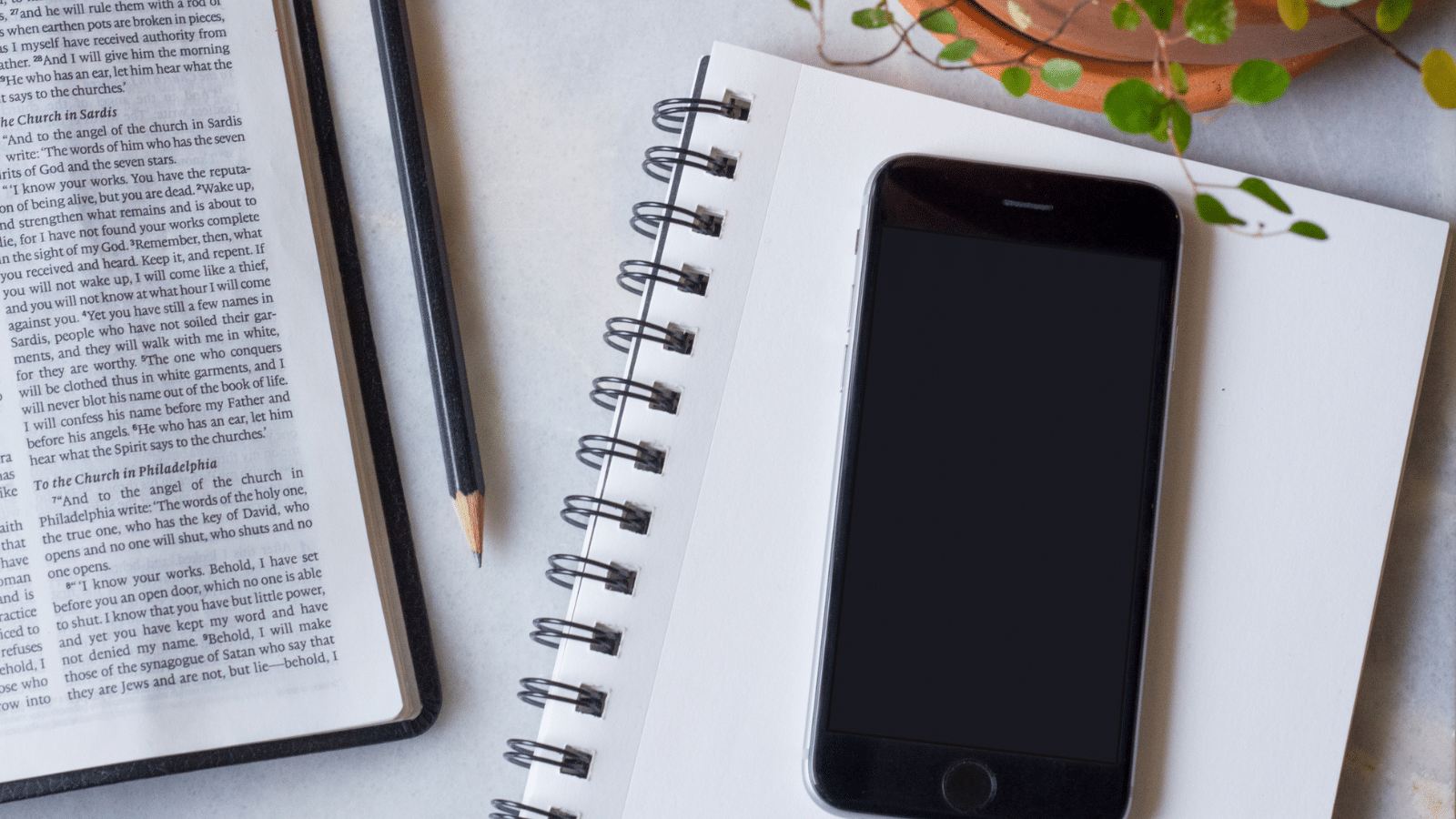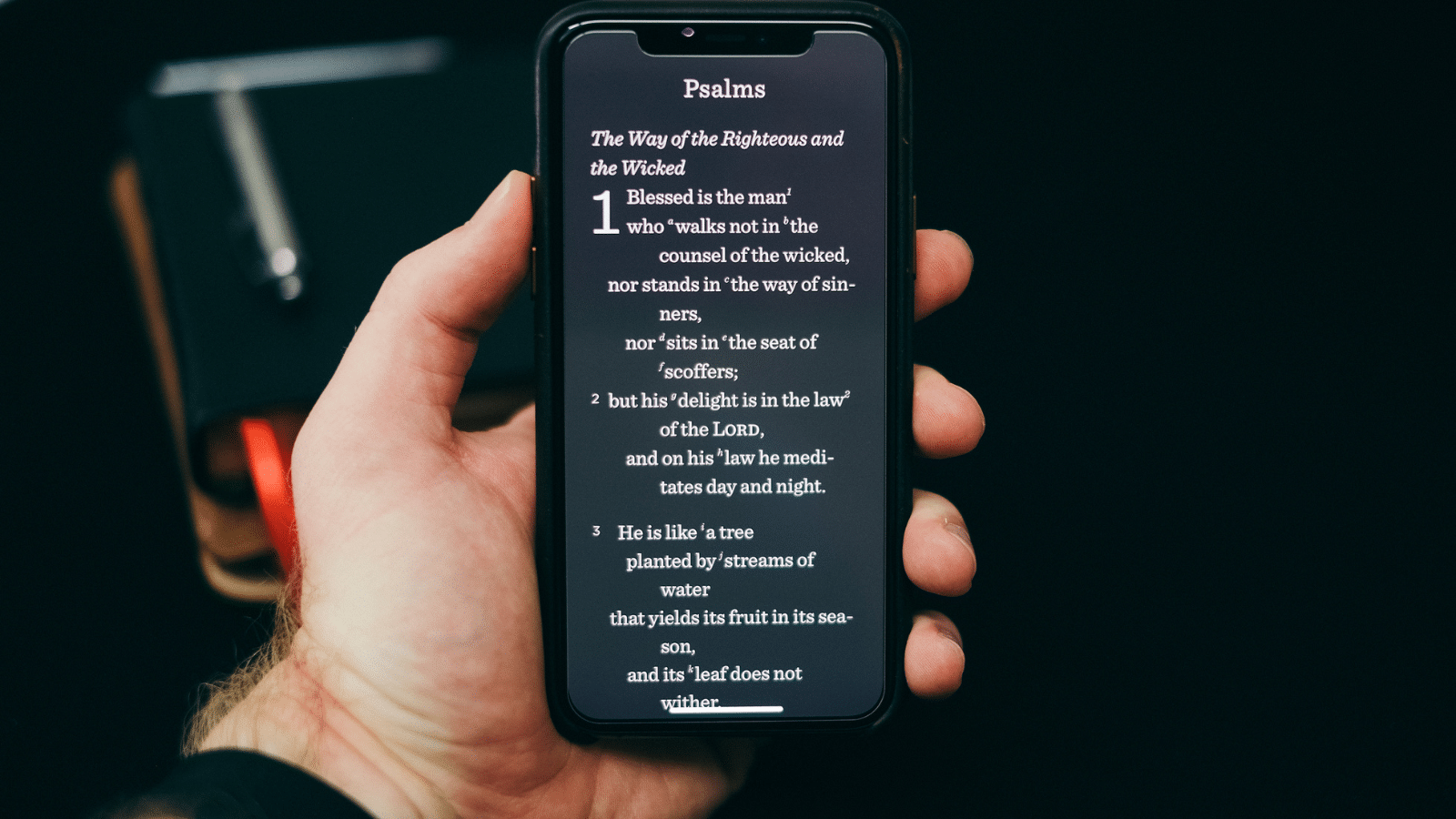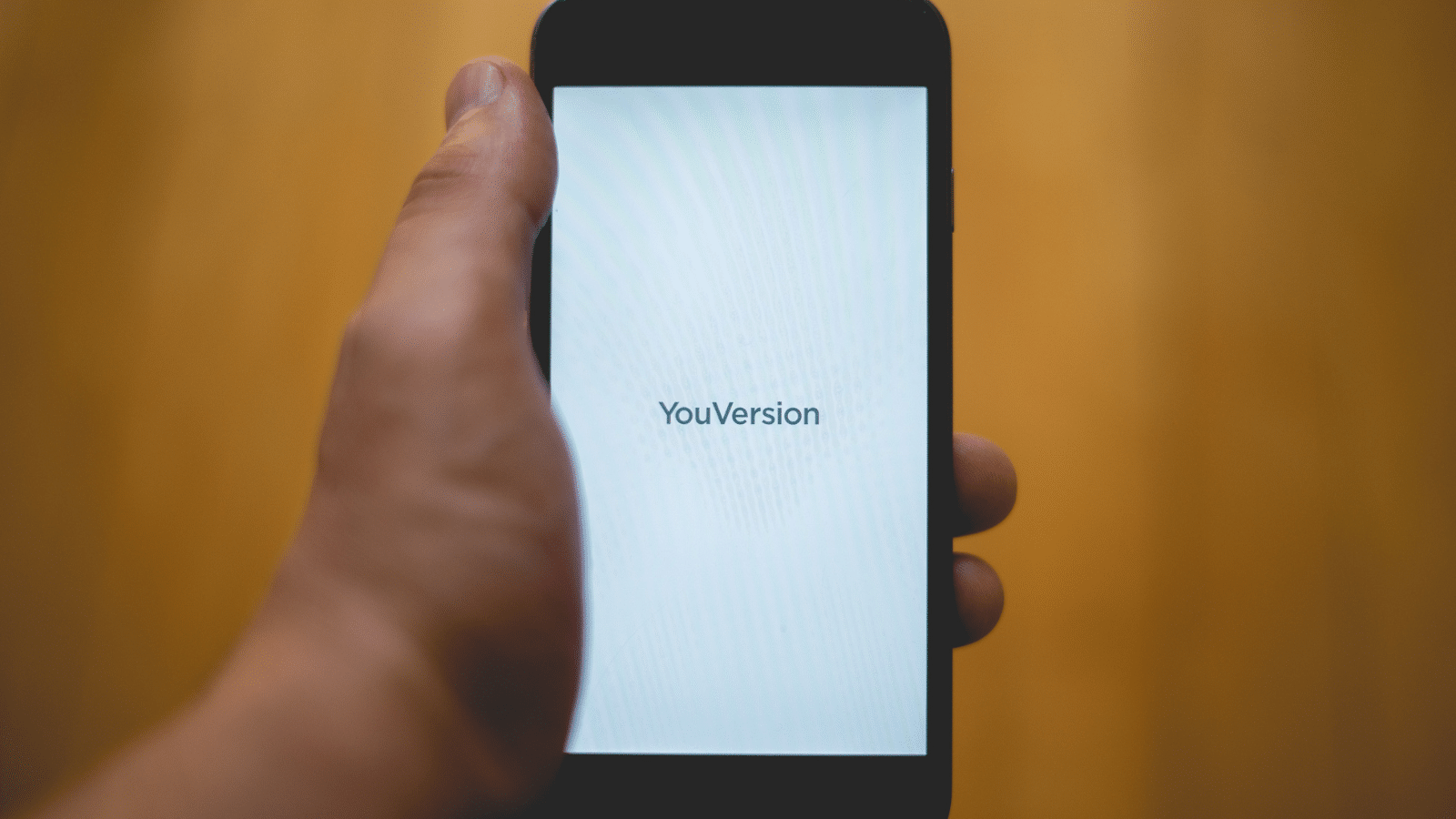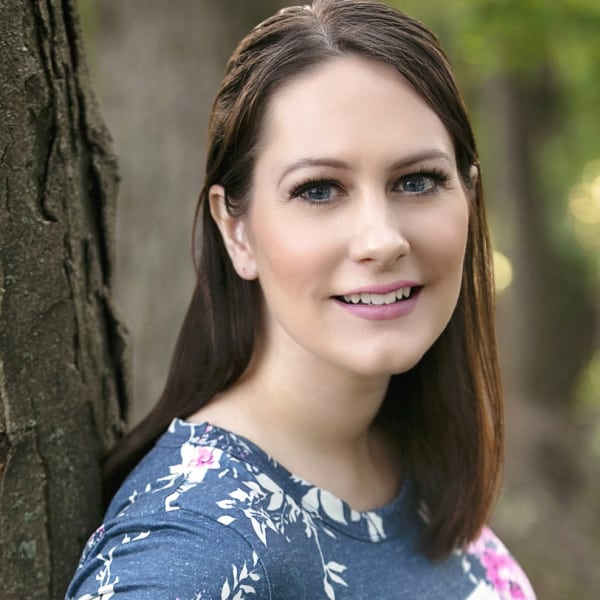Want to read your Bible more often but struggling to make it a consistent habit? You’re not alone!
According to the State of the Bible 2020 report conducted by American Bible Society and Barna Group, 59% of Americans wish they used their Bibles more often, but only 31% read their Bibles on their own (outside of church) on a weekly basis.
This has led many Bible teachers and religious leaders to ask, “If people genuinely want to read the Bible, why aren’t they doing so? And furthermore, how can we help?”
After all, there are so many resources available to help people fall in love with God’s Word. Why aren’t they taking advantage of them?
The answer may be because people don’t know or believe it’s even possible…
Is It Even Possible to Read the Bible Every Day?

Recently, on a popular social platform, one person asked,
“Is it possible to read the Bible every day?
Everytime I decide to read Bible everyday, I start and continue it only for a few days. I am not very happy with this habit. Could anyone suggest some ideas that would help me to read the Bible regularly?”
Thankfully for this person (and for us!), the answers and advice came pouring in.
1. Build a Routine

For many, creating a consistent routine can be incredibly helpful.
This way, you don’t have to remember to read the Bible everyday. Eventually, you simply do it out of a habit without even having to think about it.
This is a great way to overcome the forgetfulness and resistance that often prevent us from reading Scripture regularly.
One person responded, “Yes, it is. The key is to build a routine. Do it at the same time every day. My wife listens to it while getting ready for work, and I listen in as well. Set up an area just for that.”
Another person said, “Try building a routine or doing it at the same point everyday (like first thing in the morning, last thing before you go to bed, or during lunch).”
2. Use an Incentive

Many people find having some kind of incentive, reward, or rule helpful and motivating them to keep up with their regular Bible reading.
This reward could be anything from a cup of coffee to time with friends to time on social media.
The key is to make sure that this incentive isn’t something that you would do anyway, whether or not you read your Bible that day.
Someone shared, “Make yourself a rule, “I won’t X until I’ve read in my Bible.” A lot of people have a no-phone-before-Bible rule.”
3. Make It an Item on Your To-Do List (Or Not)

While adding daily Bible reading to your daily to-do list can be incredibly helpful for remembering to take the time to do it, one person cautioned that this technique can actually backfire.
Ideally, you want your regular Bible reading to be a source of joy and strength, not simply something you hurriedly mark off your to-do list so you can move on with your day.
One person said, “I would suggest to not read just “to read.” I think it’s an easy temptation to make it a checklist item, but I think if we can find joy in it that’s the best.”
4. Use Your Phone

While some people find using their phone to read their Bible distracting or even “cheating,” others admit that using technology can help make consistent Bible reading much, much easier.
If you are on your phone throughout the day anyway, why not take advantage of all of the free resources available to you right at your fingertips?
There are tons of online Bible study apps, articles, ebooks, and more to help you better understand and apply everything you are reading.
One person commented, “Download a Bible app. Then sign up for daily notifications/ verse of the day.”
Another person agreed, saying, “Came here to also recommend The Bible app. There are a TON of reading plans that focus on reading it in its entirety. Most of them can even be listened to, making commutes while driving an opportune time to listen.”
5. Listen to the Bible

Not a big fan of reading? “Reading” the Bible doesn’t have to mean sitting down with a paper book in hand.
If you are more of an audio or visual learner, or if you’re in a season where sitting down to read might feel impractical or even impossible, listening to an audio Bible or audio Bible guide as you go about your day can be very helpful.
You can listen while you are driving in the car, walking the dog, doing the dishes, or even laying in bed at night waiting to fall asleep.
Someone shared, “Try listening to the Bible. It’s available on CDs and is an excellent aid to study.”
6. Set a Realistic Goal

One way many people motivate themselves to stay on track with their daily Bible reading is to set a realistic goal for themselves.
This doesn’t have to be reading through the entire Bible in a year, though it can be.
Simply creating a plan with a concrete goal can be very helpful in keeping many people on track.
One person responded, “I had to make a plan I could stick to and make reasonable measurable goals. I read one chapter of the Bible every day. This helps me to read it and meditate/think on what it says. The goal not to read it fast but absorb what it says and put it into practice.”
7. Join an Accountability Group

Do you learn better when you can study Scripture with others?
In-person and online Bible studies offer so many benefits! Not only do you get the enjoyment of being with other people, but you can learn from their perspectives and life experiences, and you can get a greater degree of accountability than you would have reading the Bible on your own.
Plus, they’re fun!
Someone recommended, “Join a small group that does regular Bible study – your struggle is one I hear all the time and having it built into a weekly meeting ensures at least you’ll be reading the material regularly once a week. It’s also nice learning and praying with fellow brothers and sisters.”
Another person shared, “I am on a WhatsApp group set to complete the Bible in 1 year. We started in January. We tick boxes after each reading. Usually about 2-3 chapters each day.”
8. Use a Bible Reading Plan

Are you a checklist type of person?
If so, get online and download a Bible reading checklist or reading plan that seems like a great fit for your interests, current knowledge level, or current season of life.
Simply having something to refer to and check off every day can be incredibly helpful.
One person said, “Use a Bible reading plan. Many plans will be built to take only a few minutes of reading, but oriented on understanding what you read. You will maybe read 3-4 verses, but because those verses will all talk about the same subject by in different angles, you will grasp more the concept and want to understand more, which will give you desire to read more.”
9. Choose an Easy-to-Read Translation

Did you know: Originally, the Bible was written in Hebrew, Aramaic, and Greek? In other words — not in English.
The English Bibles we have today are all just translations of the original language, and some are easier to read than others.
And while it is true that some translations are more accurate than others, if you’re just starting out reading (not diving into deep theology), any of the common translations should be fine.
So which Bible translation should you choose?
The New Living Translation (NLT) is a great Bible translation for learning how to start reading the Bible since it’s pretty easy to read. The NIV is another very popular translation many people use.
I would avoid King James Version (KJV) or New King James Version (NKJV) if you’re just starting out, however, as they can be more difficult to understand.
10. Pick Up a Good Study Bible

Study Bibles are simply normal Bibles with additional notes and explanations in the margins to help you better understand what you’re reading. They’re so helpful.
For example, a typical study Bible may contain:
- Book introductions that summarize the main ideas
- Additional background information you would otherwise miss
- Explanations in the margins near difficult passages
- Answers to common questions
- Word definitions
- Lists of key verses by topic
- Lists of key miracles and parables and where to find them
- Detailed maps from each time period
- And much more!
11. Choose a Good Starting Place

When you’re learning how to read the Bible for the first time: DO NOT start at the beginning and attempt to read straight through.
This is a common beginner “mistake.”
The Bible isn’t like a novel where you just open up to page 1 and start reading.
Rather, the Bible is more like a collection or library of individual books, poems, letters, and documents, it’s made up of lots of different genres and writing styles, and some of the Bible’s individual books are much easier to read than others.
While you’re certainly welcome to read the Bible in any order you’d like, here’s the order I would recommend when you’re still learning how to read the Bible for the first time:
- Matthew – John
- Acts
- Romans – Jude
- Genesis and Exodus
- Psalms – Ecclesiastes
- Joshua – Job, Isaiah – Malachi
- Leviticus – Deuteronomy
- Revelation
- (Optional) the Deuterocanonical books
12. Start with an Easy-to-Read Devotional

One great thing about learning how to start reading the Bible for the first time is that there are SO many great resources available to help you as a beginning Bible reader. You definitely don’t have to reinvent the wheel or figure everything out for yourself.
For instance, Bible devotionals typically contain a very short passage of Scripture along with the author’s thoughts and ideas on the passage and how it relates to your life, all broken up into short, daily segments. You can find devotionals on pretty much any topic imaginable (such as motherhood, grief, or worry), and they’re very accessible for beginners.
Basically, Bible devotionals do all the heavy lifting for you, telling you what the author thinks the passage is about or what you should get out of it. These are perfect for learning how to read the Bible.
13. Pick Up a Good, In-Depth Bible Study on an Interesting Topic

Bible Studies, on the other hand, are the next step up.
With a good Bible study, the author will have you read a Bible passage yourself, and then answer questions about the passage so you can uncover what it means or how it applies to you today.
Similar to devotionals, you can find Bible studies on just about any Bible passage or topic.
There are tons of women’s Bible studies out there to help you as you’re learning how to read the Bible — you can find them on just about any topic or for any book of the Bible. Just choose a book or topic that looks good to you, read the Amazon reviews for a good one, or ask a friend or women’s ministry leader for a good recommendation.
14. Join a Free Online Bible Study Group

Can’t afford to purchase a new study Bible, devotional, or Bible study right now? Can’t travel or find childcare to meet in person?
No problem! There are plenty of free Bible study communities available online — for free!
The First 5 App, the She Reads Truth App, and YouVersion are three Bible study apps that are especially popular these days.
I Tried 7 Popular Bible Apps: This One Was My All-Time Favorite

More than twenty percent (21%) of U.S. adults use apps or websites to help them read Scripture, according to Pew Research Center.
Nearly ten percent (9%) of adults use these apps or websites daily.
Yet, not all Bible apps are created equal.
Whether you’re looking for interesting Bible reading plans, in-depth Scripture studies, or inspiring verses to share on social media to kick off your new year, here are seven popular Bible apps you may want to try this year, along with which type of reader each app is best suited for.
I Tried 7 Popular Bible Apps: This One Was My All-Time Favorite
Do You Truly Enjoy Reading the Bible? You Can!

Reading the Bible doesn’t have to be dull, dry, or boring; You truly can look forward to and enjoy reading the Bible.
Check out these 6 practical and effective tips to help!
Read Do You Truly Enjoy Reading the Bible? You Can!
Brittany Ann is an ECPA bestselling author and founder of Equipping Godly Women and Monetize My Ministry. She’s also a Christian speaker, podcaster, and conference host. Her work has been featured on numerous TV, radio, and online ministries, including CBN, MSN, Christianity Today, Evangelical Alliance, Patheos, Crosswalk, and more.

